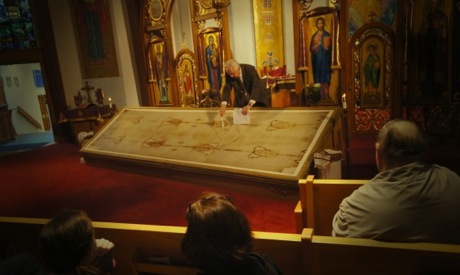New tests conducted at the University of Padua have confirmed that the Shroud of Turin can be dated back to around the first century AD.
This dating is compatible with the tradition that the cloth with the image of a crucified man imprinted on it is the one in which Jesus’ body was wrapped when he was placed in the tomb on Good Friday.
The new tests were carried out by university professors from various Italian universities.
“We carried out three alternative dating tests on the shroud, two chemical and one mechanical, and they all gave the same result and they all traced back to the date of Jesus, with a possible margin of error of 250 years,” said Giulio Fanti, an associate professor of mechanical and thermal measurement at Padua.
The first two tests were carried out with an FT-IR system, using infra-red light, and the other using Raman spectroscopy. The third was a multi-parametric mechanical test based on five different mechanical parameters.
The machine used to examine the shroud’s fibres and test traction allowed researchers to examine tiny fibres alongside about 20 samples of cloth dated between 3000 BC and AD 2000.
The results have been published in a book by Fanti and journalist Saverio Gaeta, Il Mistero della Sindone (The Mystery of the Shroud).
In 1988 teams from Oxford, the University of Arizona and the Swiss Federal Institute of Technology, under the auspices of the Pontifical Academy for Sciences, did radiocarbon testing on small samples from the shroud, dating them to between 1260 and 1390.
Subsequently, however, questions were raised as to whether the samples used in the 1988 testing were representative of the whole shroud.
New high-definition image of the entire surface of the shroud have been presented in a special app developed by the Italian company Haltadefinizione, called “Shroud 2.0”.
Sources:
Image: Guardian Express
Additional readingNews category: World.




